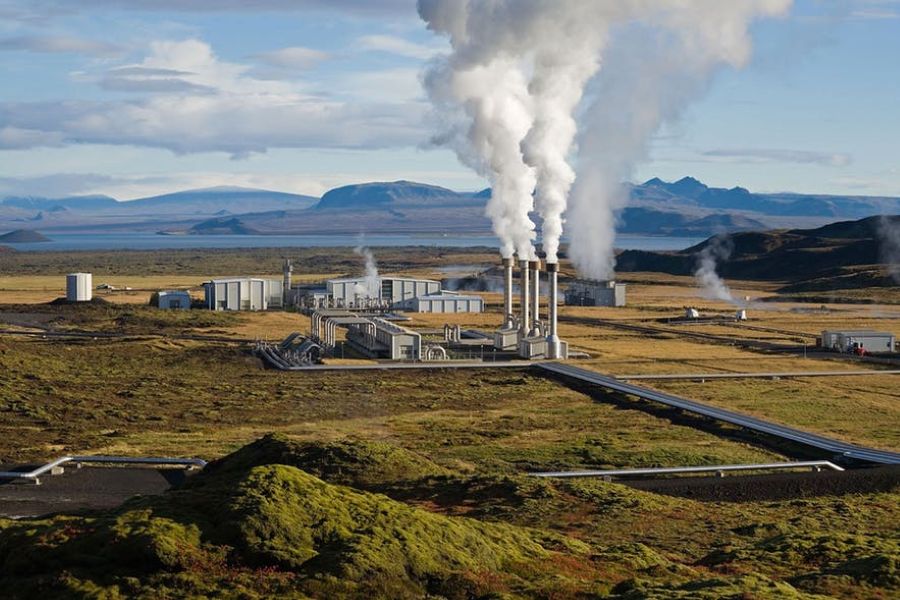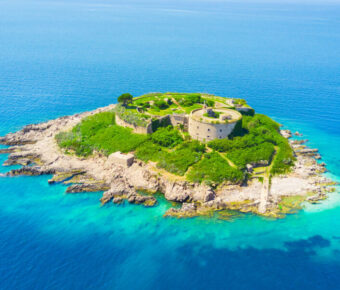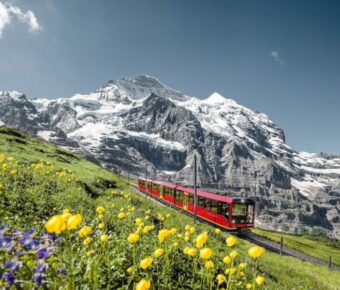
Oslo vs Reykjavik: Which Nordic Capital Offers Better Value for Winter Travel in 2025
Oslo and Reykjavik stand as two remarkable Nordic capitals, each with their own distinct charm and character. While Oslo offers more shopping, culture, and sunny winter days with 40 hours of sunshine in January compared to Reykjavik’s 27 hours, Reykjavik wins travelers over with its otherworldly landscapes and unique natural wonders.
These two cities present different takes on Nordic life. Oslo shines with its blend of modern architecture, museums, and urban attractions. Meanwhile, Reykjavik draws visitors with its proximity to glaciers, volcanoes, and the famous Northern Lights. Money-wise, Oslo gives more bang for your buck – groceries cost about 12% less than in Reykjavik, and the local purchasing power is 17% higher.
Contents
- Geographic Overview
- Location and Topography
- Climate and Average Temperature
- Cultural Insights
- Historical Significance
- Modern Cultural Landscape
- Outdoor Adventures
- Nature and Natural Beauty
- Hiking and Exploration Opportunities
- City Life and Amenities
- Nightlife and Entertainment
- Shopping and Local Markets
- Education and Universities
- Living Expenses
- Cost of Living Comparison
- Housing and Utilities
- Transportation and Connectivity
- Wildlife and Environment
- Marine Life and Birdwatching
- Conservation and Environmental Policies
- Seasonal Attractions
- Winter Activities and Northern Lights
- Summer Events and the Midnight Sun
- Travel Tips and Hidden Gems
- Frequently Asked Questions
- What are the key differences in living costs between Oslo and Reykjavik for travelers?
- Which destination is preferable for viewing the Northern Lights, Norway or Iceland?
- How do Norway and Iceland compare when it comes to travel experiences?
- Which city offers a more engaging winter holiday experience in December, Oslo or Reykjavik?
- Can you compare the natural beauty of Iceland with that of Norway?
- In terms of budget-friendliness for tourists, how do Iceland and Norway stack up against each other?
- More Travel Guides
Geographic Overview
Oslo and Reykjavik sit at different latitudes in Northern Europe, with distinct landscapes shaped by glaciers, volcanic activity, and maritime influences. The cities’ unique positions impact their climate patterns and natural surroundings.
Location and Topography

Reykjavik lies at 64.1°N latitude on Iceland’s southwestern coast. The city spreads across a peninsula, surrounded by dramatic lava fields and rugged mountains. The landscape features black sand beaches, geothermal springs, and rocky cliffs shaped by volcanic forces.
Oslo sits at 59.9°N latitude along Norway’s southern coast. The city nestles at the head of the Oslo Fjord, with forested hills rising on three sides. The terrain combines gentle slopes with scattered lakes and islands.
The Norwegian capital spans 454 square kilometers, while Reykjavik covers 274 square kilometers. Both cities feature a mix of urban development and natural spaces.
Climate and Average Temperature

Reykjavik experiences a subpolar oceanic climate with mild summers and cool winters. Summer temperatures average 11-13°C (52-55°F), while winter brings temperatures around 0°C (32°F). The city gets frequent rain and receives limited sunlight in winter – just 27 hours monthly.
Oslo enjoys a humid continental climate with warmer summers. July temperatures reach 20-22°C (68-72°F), and winters drop to -4°C (25°F). The city sees more sunshine than Reykjavik, with 40 hours of winter sun monthly.
Rain patterns differ too. Oslo gets about 49mm of rain in January, while Reykjavik receives 76mm. The Norwegian capital stays drier through most seasons.
Cultural Insights
Both Oslo and Reykjavik offer rich cultural experiences shaped by their Viking heritage and modern Nordic lifestyles. Each city has preserved its historical roots while embracing contemporary art, music, and innovation.
Historical Significance

Oslo’s deep cultural roots shine through at the Viking Ship Museum, where ancient vessels tell stories of seafaring adventures. The Akershus Fortress stands as a symbol of Norway’s medieval past, offering guided tours that bring history to life.
The University of Oslo plays a key role in preserving Norwegian heritage through its research and cultural programs. Its museums house important artifacts from Norse mythology and Viking settlements.
Reykjavik’s Settlement Exhibition showcases Iceland’s earliest foundations, built around an actual Viking longhouse. The National Museum of Iceland displays treasures from the Settlement Age through modern times.
Modern Cultural Landscape

Oslo’s Opera House represents the city’s modern cultural revolution. Its striking architecture invites visitors to walk on the roof for unique city views. The Munch Museum celebrates Norway’s most famous artist with the world’s largest collection of his works.
Street art brightens Reykjavik’s buildings with colorful murals that reflect Icelandic folklore. The Harpa Concert Hall hosts world-class performances in a glass building inspired by Iceland’s basalt landscapes.
Both cities embrace cafe culture, but each with their own twist. Oslo’s coffee scene ranks among the world’s best, while Reykjavik’s cozy cafes serve as warm refuges during long winter nights.
Live music thrives in both capitals. Oslo’s clubs feature everything from jazz to electronica, while Reykjavik’s venues spotlight Iceland’s unique indie music scene.
Outdoor Adventures
Both Nordic capitals offer amazing opportunities to experience pristine wilderness and natural wonders. The cities serve as perfect bases for exploring stunning landscapes and seasonal activities unique to each location.
Nature and Natural Beauty

Oslo sits among dramatic fjords and forested hills that create a stunning backdrop. The city borders Nordmarka, a vast wilderness area perfect for nature walks. You can take boat trips through the Oslo Fjord to see rugged coastlines and tiny islands.
The scenery around Reykjavik feels almost otherworldly. Black sand beaches, active volcanoes, and geothermal hot springs dot the landscape. The famous Golden Circle route lets visitors see powerful geysers and waterfalls. Between September and March, the magical northern lights often dance across the night sky.
Hiking and Exploration Opportunities

Oslo’s extensive trail network makes it easy to go hiking right from the city center. The marked paths through Nordmarka forest range from gentle nature walks to challenging mountain trails. In winter, many trails transform into cross-country ski routes.
Reykjavik gives quick access to Iceland’s natural wonders through guided tours and self-driven trips. The Ring Road circles the entire island, connecting major hiking areas and natural attractions. Popular day hikes visit ice caves, glacier walks, and volcanic craters.
Both cities have excellent public transportation to nearby trailheads. You’ll find well-maintained paths and clear signs in both locations. Many visitors book guided adventure tours to safely explore the more remote areas.
The summer midnight sun creates extra long days for outdoor activities in both cities. Spring and fall offer mild temperatures ideal for hiking. Winter brings opportunities for northern lights viewing and snow sports.
City Life and Amenities
Both Oslo and Reykjavik offer vibrant urban experiences with distinct cultural flavors. Oslo stands out for its modern amenities and bustling city center, while Reykjavik charms visitors with its tight-knit community feel and creative atmosphere.
Nightlife and Entertainment

Oslo’s nightlife spreads across several districts, with Grünerløkka being the trendiest spot for bars and live music. The city keeps the party going until 3 AM on weekends, with lots of craft beer bars and dance clubs.
Reykjavik’s party scene is legendary, especially on weekends. The famous “runtur” pub crawl along Laugavegur street draws crowds until sunrise. Live music venues showcase Iceland’s unique music scene, from indie rock to electronic.
Both cities have excellent theaters and concert halls. Oslo’s Opera House hosts world-class performances, while Reykjavik’s Harpa Concert Hall amazes visitors with its glass architecture and cultural events.
Shopping and Local Markets

Oslo’s shopping scene centers around Karl Johans Gate, the main shopping street. The city has many modern malls like Oslo City and Aker Brygge, plus trendy boutiques in Bogstadveien.
The Mathallen food hall in Oslo offers local Norwegian specialties and international cuisine under one roof. It’s perfect for trying traditional foods or grabbing fresh ingredients.
Reykjavik’s main shopping area runs along Laugavegur street. You’ll find Icelandic wool sweaters, designer goods, and unique local crafts. The Kolaportið flea market opens on weekends, selling traditional foods and secondhand items.
Education and Universities

The University of Oslo ranks among Scandinavia’s top schools, with over 27,000 students. It offers programs in English and has strong research departments.
Oslo has several specialized colleges for arts, business, and technology. The city attracts international students with its high education standards and student-friendly atmosphere.
Reykjavik’s University of Iceland serves as the country’s main higher education hub. The campus sits near downtown, bringing student energy to the city center. International students often choose Reykjavik for unique programs in areas like renewable energy and Arctic studies.
Living Expenses
Living costs vary significantly between these Nordic capitals, with Reykjavik being more expensive across most categories than Oslo. The average salary tends to stretch further in Oslo.
Cost of Living Comparison

Reykjavik ranks as the more expensive city, with costs about 7.7% higher than Oslo. A single person needs around 949,440 Norwegian Kroner in Oslo to maintain the same living standard as 1,100,000 Icelandic Kroner in Reykjavik.
Monthly salaries go further in Oslo. The average after-tax income covers about 1.6 months of expenses in Oslo, compared to 1.3 months in Reykjavik.
Food prices show notable differences. Grocery shopping costs roughly 7.7% more in Reykjavik than Oslo. Restaurant prices are slightly higher in Reykjavik, at about 0.7% more expensive.
Housing and Utilities

Rental costs make up the biggest expense in both cities. A one-bedroom apartment in central Oslo typically costs between 12,000-16,000 NOK monthly. Similar accommodations in downtown Reykjavik run about 180,000-250,000 ISK.
Basic utilities like electricity, heating, and water average 1,500 NOK monthly in Oslo. Reykjavik residents benefit from cheaper utilities thanks to geothermal energy, often paying 30-40% less than Oslo.
Internet services cost about the same in both cities, averaging 60-80 EUR monthly for high-speed connections.
Transportation and Connectivity

Public transport networks are extensive in both capitals. Oslo’s system includes buses, trams, metros, and ferries. A monthly pass costs around 800 NOK.
Reykjavik’s bus system serves as the main public transport option. Monthly passes run about 16,000 ISK.
Taxi fares start at 97 NOK in Oslo versus 790 ISK in Reykjavik. Both cities offer excellent bike-sharing programs and pedestrian-friendly infrastructure.
Car ownership brings extra costs. Parking fees in central Oslo average 200-400 NOK daily. Reykjavik parking rates typically range from 150-250 ISK per hour in the city center.
Wildlife and Environment
Both Nordic capitals offer unique ways to experience nature and wildlife, with strong environmental policies protecting their distinct ecosystems. Oslo’s fjords and forests meet Reykjavik’s dramatic volcanic landscapes and coastal waters.
Marine Life and Birdwatching

The waters around Reykjavik attract 23 whale species, including humpbacks, orcas, and minke whales. You can spot these giants on boat tours from April to October. The city’s coast draws thousands of puffins each summer, nesting on nearby islands like Akurey.
Oslo’s fjord houses a rich marine ecosystem. Seals and porpoises swim in the clean waters, while white-tailed eagles soar overhead. The islands of the Oslofjord host many seabird colonies during nesting season.
Conservation and Environmental Policies

Oslo leads in green initiatives with its car-free city center and wildlife corridors that help animals move safely through urban areas. The city protects its native species through strict regulations and natural habitat preservation.
Reykjavik takes pride in its renewable energy usage, powered by geothermal and hydroelectric sources. The city maintains strict rules about building development to protect local bird habitats and marine ecosystems.
Both cities run educational programs teaching visitors about local wildlife. Rangers and guides help tourists spot animals while following responsible viewing practices.
The capitals enforce no-fishing zones in key breeding areas. These protected spaces let marine populations thrive and maintain healthy numbers.
Seasonal Attractions
Oslo and Reykjavik shine at different times of year, with each city offering unique natural wonders and seasonal events that make them special travel spots.
Winter Activities and Northern Lights

Reykjavik is a prime spot for seeing the Northern Lights from September to March. The best viewing happens on clear, dark nights away from city lights. Many local tour companies take visitors to prime viewing locations outside the city.
Oslo’s winter activities focus on skiing and outdoor sports. The city has eight ski centers within its limits. The Holmenkollen Ski Jump is a must-see landmark that offers amazing city views.
Winter temperatures vary greatly between the cities. Reykjavik stays around 32°F (0°C), while Oslo drops to about 23°F (-5°C). Both cities get limited daylight in winter – Oslo sees about 6 hours daily, while Reykjavik gets only 4-5 hours.
Summer Events and the Midnight Sun

The Midnight Sun creates amazing summer experiences in both cities. Reykjavik enjoys nearly 24 hours of daylight from mid-May through July, perfect for late-night hiking or golfing. The city comes alive with festivals like Secret Solstice and Reykjavik Arts Festival.
Oslo gets about 18 hours of summer daylight. The warm weather brings locals outdoors to enjoy various activities, including:
- Music festivals at Øya and Norwegian Wood
- Outdoor dining at Aker Brygge
- Swimming at Tjuvholmen
- Picnics in Vigeland Sculpture Park
Summer temperatures are mild. Oslo averages 73°F (23°C), making it warmer than Reykjavik’s typical 57°F (14°C) summer days.
Travel Tips and Hidden Gems

Both Oslo and Reykjavik hide amazing spots that most tourists miss. In Oslo, the trendy Grünerløkka neighborhood offers vintage shops, local cafes, and street art off the main tourist path. The area comes alive on weekends with flea markets and food stalls.
The Aker River Walk in Oslo leads past old factory buildings and waterfalls. It’s perfect for photos and picnics away from city crowds. The walk connects several parks and green spaces.
Reykjavik’s local swimming pools beat the touristy Blue Lagoon. These geothermal pools cost less and give visitors a real taste of daily Icelandic life. Vesturbaejarlaug pool offers amazing views of the sea.
Money-saving tips for both cities:
- Get city passes for free museum entry and transport
- Shop at local markets instead of tourist shops
- Visit during shoulder season (March-May or September-October)
- Book accommodations in residential areas
- Use public transport instead of taxis
Hidden food gems in Reykjavik include the hot dog stand Bæjarins Beztu Pylsur and the weekend flea market Kolaportið for local treats. In Oslo, try the food halls at Mathallen for authentic Norwegian dishes at good prices.
The best views of Reykjavik come from the free observation deck at Perlan museum. For Oslo’s best free lookout, head to the Opera House roof – visitors can walk on top of the building.
Frequently Asked Questions
Many travelers want to compare Oslo and Reykjavik before picking their next Nordic adventure. Both cities offer unique experiences with different costs, natural wonders, and seasonal activities to consider.
What are the key differences in living costs between Oslo and Reykjavik for travelers?
Both Oslo and Reykjavik rank among Europe’s most expensive cities. A daily budget for basic expenses starts around $150 in both places.
Food costs tend to be higher in Reykjavik, especially at restaurants. A basic meal might cost $25-30 in Oslo and $35-40 in Reykjavik.
Public transport is cheaper in Oslo, with single tickets around $4 compared to $5-6 in Reykjavik.
Which destination is preferable for viewing the Northern Lights, Norway or Iceland?
Reykjavik offers better chances to see the Northern Lights due to its location near the Arctic Circle. The viewing season runs from September to March.
Oslo sits too far south for reliable Aurora viewing. Travelers need to head north to places like Tromsø for good Northern Lights spotting.
How do Norway and Iceland compare when it comes to travel experiences?
Norway excels in fjord adventures and mountain hiking. The country features longer train routes and more varied landscapes.
Iceland stands out for its volcanoes, black sand beaches, and geothermal features. The Ring Road makes it easy to see many sights by car.
Which city offers a more engaging winter holiday experience in December, Oslo or Reykjavik?
Oslo gets more sunlight in winter with about 40 hours of sunshine per month. The city offers excellent Christmas markets and winter sports nearby.
Reykjavik sees just 27 hours of winter sun monthly. The darkness creates a cozy atmosphere with festive lights and warm cafes.
Can you compare the natural beauty of Iceland with that of Norway?
Iceland’s landscape features active volcanoes, geysers, and stark lava fields. The scenery changes dramatically within short distances.
Norway’s beauty comes from deep fjords, dense forests, and towering mountains. The coastline stretches longer than Iceland’s.
In terms of budget-friendliness for tourists, how do Iceland and Norway stack up against each other?
Both countries rank among the world’s most expensive travel destinations. Hotel rooms cost around $200-300 per night in both capitals.
Car rental prices run higher in Iceland, often reaching $100+ daily. Norway offers better public transport options to cut costs.
Food shopping at supermarkets can save money in both places. Buying alcohol costs more in Norway due to higher taxes.


